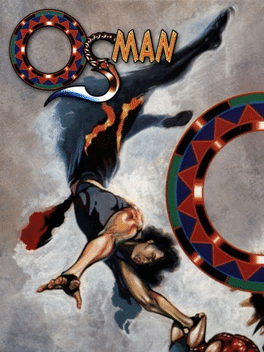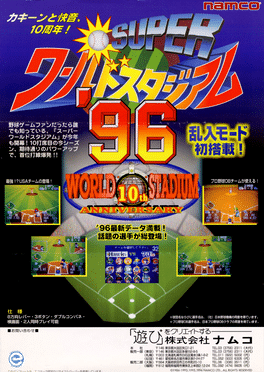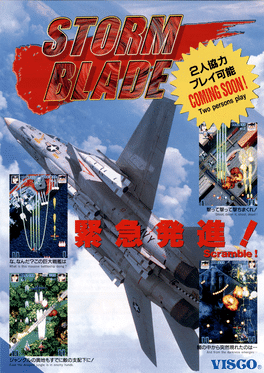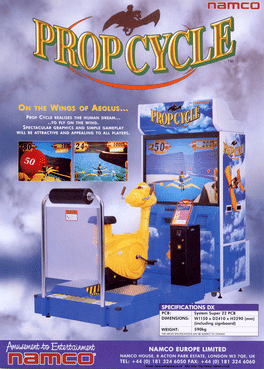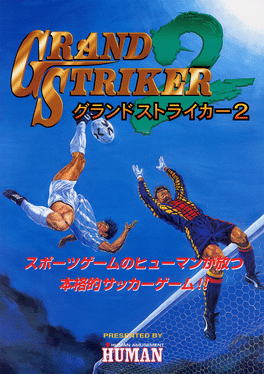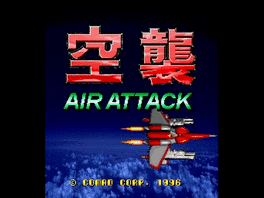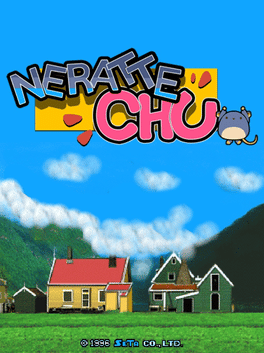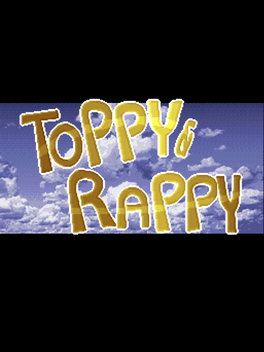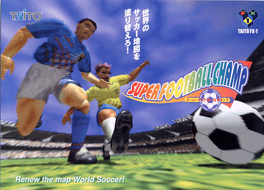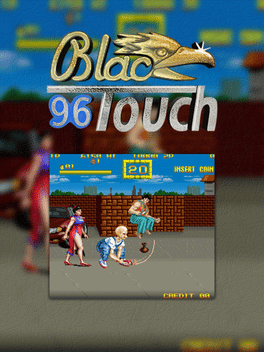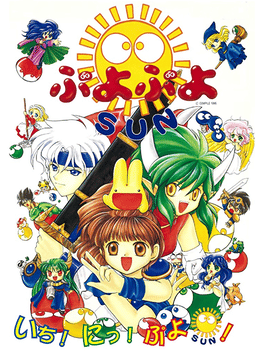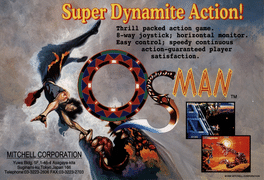New Arcade Games - Page 58
-
Dolmen
1996
-
Mega Man 2: The Power Fighters
1996
star 6It's a disaster: Doctor Light's lab has been attacked by Doctor Wily, and stolen some crucial parts for robots. And, if it weren't bad enough already, he has taken Roll as a hostage! Mega Man and Proto Man go to stop Wily and stumble upon Duo, the big alien robot, who is willing to help. And Bass, still angry that Wily has revived more Robot Masters, again teams up with the good side to destroy the enemies... -
Osman
1996
Osman
1996
It is the late 21st century, and the world has come under the control of a single federal government. One day a new threat known as Abdullah the Slaver appears, causing widespread terror and panic. The fear in men's hearts incites the abandonment of all economic activity. The federal government, which is the foundation of capitalism and modern civilization, has become nothing less than an insidious idea that corrupts the foundations of society itself. It destroys the idiosyncrasies and variations among national viewpoints, stifling them in the name of "freedom" and its own internal ideals. Judicial Affairs Director Jack Layzon alone grasps the situation, fearing the worst. He summons the lone assassin who had mastered the 'secret style'... -
Wally wo Sagase!
1996
Wally wo Sagase!
1996
Wally wo Sagase! is a 1992 arcade game by Sega for the Sega System 18 tying into the Where's Wally? (Where's Waldo? in the US) media franchise. You use a trackball to find Wally in a number of different ways (catching him in an animation, finding him in a door, finding him with only a small portion of the screen visible at a time, etc.). It is only known to have been released in Japan, however most people use the translated name Where's Wally!; whether or not there was an overseas release is unknown (TODO find proof). -
Ultra Balloon
1996
-
Storm Blade
1996
Storm Blade
1996
A vertical-scrolling shoot-em-up where you fly a jet over land and sea battling various land, air, and sea enemies. -
Prop Cycle
1996
Prop Cycle
1996
You pilot a winged bicycle and try to earn points by popping the hot-air balloons you see ahead of you. You have to reach the minimum quota of points in order to advance. -
Lethal Justice
1996
-
Grand Striker 2
1996
-
Bishi Bashi Championship Mini Game Senshuken
1996
A collection of mini games that can support up to 3 players using red, green and blue buttons. -
Air Attack
1996
Air Attack
1996
The player ships fly through a total of seven stages fighting many enemies and multiple end-level bosses. Each player ship had a semi-automatic Normal shot and Bomb Stock, appearing as a large Phoenix. Players has a total of four different weapon pick-up items to choose from. Weapon 1 is the standard Vulcan weapon, Weapon 2 is a Rapid-Fire shot, Weapon 3 is an area-effect weapon that fires in five directions, two behind the ship and Weapon 4 is a Rocket weapon. Collecting four of the same weapon pick-up allows the selected weapon to flare-out. The player ship only had one hit though and there were no Extend Bonuses. -
Neratte chu
1996
-
Toppy & Rappy
1996
Toppy & Rappy
1996
Toppy & Rappy can be seen as a sucessor in spirit to Metal Saver, although it seems inferior to the two years older game in many ways. Not only does it run in a lower resolution, but the art style is very inconsistent between sprites and backgrounds as well. Once again one male and one female character are used as protagonists, but this time they have equal abilities and only differ in their looks. Instead of grabbing powerups directly, the two gather money by defeating enemies, which is used to buy weapons and ammunition in a shop between stages. -
Batman Forever: The Arcade Game
1996
Batman Forever: The Arcade Game follows the basic plot of the movie Batman Forever. The Riddler and Two-Face have hatched a plot to steal all of the deep, dark secrets of every citizen in Gotham, and the only people who can stop them are Batman and Robin. Take control of one of the Caped Crusaders and punch and kick your way through level after level thugs. Punching and kicking can be tiresome, so feel free to use any of a number of special weapons, including the Batarang. With all of the action, you'll want to strap on a utility belt and take out the villains yourself. -
Super Football Champ
1996
-
Black Touch '96
1996
Black Touch '96
1996
Black Touch 96 is a 2D urban themed beat 'em-up game that puts players in the shoes of a muscled guy. The plot involves in what appears to be a kidnapping of a young woman by a gang of criminals. The player is off to save her. Gameplay includes 2.5D sidescrolling and beating up enemies with various kick and punch attacks. Along the way items can be found that replenish health among other things. Enemies include various weird street scum and bosses. The game can be played solo or with a friend. The second player takes control of a mysterious guy wearing a robe and straw hat. -
Penky
1996
-
Puyo Puyo Sun
1996
Puyo Puyo Sun
1996
Puyo Puyo Sun also as Puyo Puyo 3 is the third installment of the Puyo Puyo game series. The game was initially developed for the Sega Saturn-based ST-V arcade hardware in 1996. The game's title and emphasis on the sun is a play on the Japanese word for the number three, san. -
Os Man
1996


